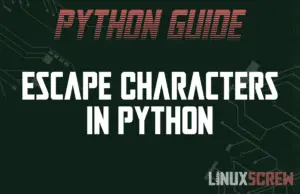Concatenating (Joining) Strings in Python
Let’s look at two ways you can concatenate (which is a fancy word for join or merge) two or more strings in Python. It’s also worth checking out our article on converting integers to strings in Python. A Note On Immutable Strings Strings in Python are immutable and cannot be changed once defined. This means that whenever you join two strings, a new string is created (ie. the original is not modified!). This has both performance side effects and affects how you should structure your code: … Read more










